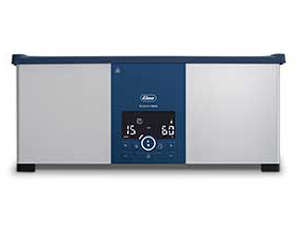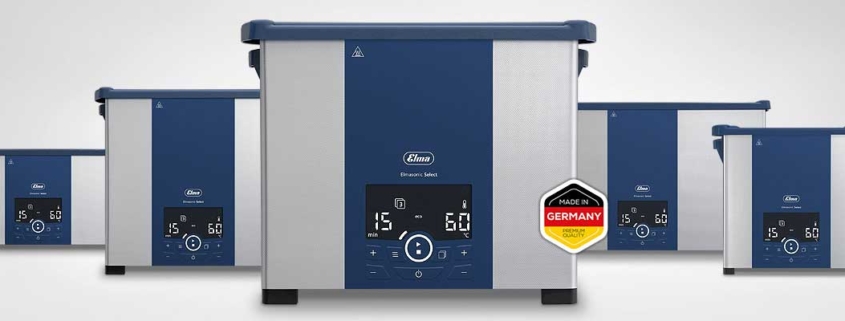Top Ultrasonic Cleaner Markets
A report by Polaris Market Research citing ultrasonic cleaner market size through 2032 notes that ultrasonic cleaning “has become a preferred choice because it provides thorough and consistent cleaning, effectively eliminating contaminants, including from intricate and hard-to-reach areas.”
The Polaris report cites markets where ultrasonic cleaner machines find application. This post offers equipment and cleaning solution suggestions related to certain of these markets.
For information on the ultrasonic cleaning process please check how ultrasonic cleaners work.
Ultrasonic Cleaners for Medical and Surgical Equipment
According to the Association of PeriOperative Registered Nurses (AORN) Recommended Practices Committee pre-prep is important when cleaning medical instruments.
It states that “initial instrument decontamination should begin immediately after any invasive procedure.*”
If instruments are batched before the ultrasonic cleaning step they should be immersed in a solution such as an enzyme soak to further protect against residual contaminants drying on them.

Ultrasonic cleaners such as the 2.4 gallon Elmasonic Select 80 and 3.9 gallon capacity Elmasonic Select 150 are ideal for cleaning medical and surgical instruments up to 18 inches long.
The Elmasonic Select series ultrasonic cleaners operate at 37 kHz ultrasonic frequency to quickly and safely remove the most stubborn contaminants.
These units offer 5 ultrasonic modes and store up to 4 commonly used programs for quick call-up and reproducible results.
Following ultrasonic cleaning, instruments are sterilized or disinfected before storage.
* “Recommended practices for the care and cleaning of surgical instruments and powered equipment” AORN Journal, January 1997
Ultrasonic Cleaning in the Electronics Industry
Removing soldering flux and residues from new PCBs and dirt when reconditioning PCBs and mobile devices by using an ultrasonic PCB cleaner is faster and more gentle than soaking and scrubbing with sprays and solvents.
Manual PCB cleaning is time consuming, can damage delicate PCB and mobile device assemblies, and can be environmentally unfriendly.
An ultrasonic PCB cleaner provides your best assurance that contaminants have been completely removed from new or reconditioned board configurations.
When selecting your ultrasonic PCB cleaner keep in mind that cleaning is accomplished in baskets, with dimensions slightly smaller than the tank dimensions.
Boards should be positioned vertically in the basket in such a way that they are not in contact with each other.
Note that this process should not be employed when boards contain sealed board-mounted relays.
For more information, including equipment suggestions, check out our post on ultrasonic cleaners for electronics.
Ultrasonic Cleaners in Laboratory and Healthcare Facilities
Sample prep, cleaning laboratory glassware and cleaning laboratory sieves represent key applications for ultrasonic cleaners.
When used for sample prep, ultrasonic cleaning machines are often referred to as sonicator baths.
A sonicator bath may be used to extract an active pharmaceutical ingredient (API) from its carrier, or excipient, prior to conducting content uniformity and potency assay tests. Many USP monographs recommend using a sonicator bath to dissolve samples prior to analysis.

In sample prep applications cavitation energy passes through the walls of glass beakers and flasks positioned in the tank. These contain solvents and samples to be analyzed. Cavitation in the solvent agitates the contents of the glass vessels, rapidly dispersing, mixing, or dissolving the samples.
Equipment Suggestions for Sonicator Baths
If you are testing several samples in small containers, the 3.9 gallon Elmasonic Select 150 is ideally suited for USP methods that specify a sonicator bath.
Other ultrasonic cleaners can be used as sonicator baths when working with larger sample containers, samples that require deeper immersion, or samples that are more difficult to process.
If your interests lie in sample prep applications for ultrasonic cleaners, you’ll find useful information in the role of sonicators in sample prep.
Ultrasonic Cleaning Laboratory Glassware
Cleaning lab glassware such as burettes, pipettes, flasks and graduated cylinders can be challenging because glassware is susceptible to breakage, and complex configurations make thorough cleaning difficult.
For cleaning laboratory glassware a good choice is the Elmasonic E Plus series in 8 models from 0.25 to 7.5 gallons.
As with all ultrasonic cleaner specifications, when considering capacity the important figures are internal tank dimensions. These are slightly larger than the dimensions of the basket holding items being cleaned.
Also to be considered is the working depth of the unit, which is the distance between the bottom of the cleaning basket and the surface of the solution.
Ultrasonic Cleaning Systems for Laboratory Sieves
Cleaning fine mesh particle analysis lab sieves becomes more difficult as mesh size decreases. This makes it more likely that particles become trapped in fine sieve openings.
Manual cleaning test sieves has drawbacks including potential damage to the mesh and failure to achieve 100% particle removal.
One way to solve the problem is by combining the 7.5-gallon Elmasonic E Plus ultrasonic cleaner with the Elma SRH 4/200 sieve rotation holder.
The electrically powered SRH 4/200 is positioned atop the ultrasonic cleaner and holds up to 4, 200-mm (8 inch) lab sieves.
Lab sieves are clamped in a slightly canted position and rotated into and out of the ultrasonic cleaning solution. Lab sieve screens are canted. This allows removed particles to fall to the bottom of the cleaning tank.
The rotation feature of the SRH 4/200 also serves as a rinsing action, further contributing to thorough cleaning.
For more on this and other options check our post on cleaning lab sieves with an ultrasonic cleaner.
Ultrasonic Cleaning in the Automotive and Aerospace Industry
Professionally trained automotive mechanics as well as backyard, shade-tree DIY mechanics know that few things get dirtier than engine parts.
Thoroughly cleaning carburetors, fuel injectors, transmission/drive-trains, complete engines or other components calls for more than aerosol sprays and wash tanks in professional automotive and diesel service bays.
This applies as well to small engine repair shops who face high demand as garden tractor, lawn mowing, snow-blowing, snow-mobile and motor-boating seasons approach. “Why can’t you fix it now???”
An ultrasonic cleaner is the mechanic’s best friend when it comes to cleaning automotive carburetors and fuel injectors. Benchtop units such as the Elmasonic E Plus 120H are ideal for these applications.
Another application is the need for operators of diesel engine long haul trucks and similar equipment to meet ever-more-stringent emission standards. Ultrasonic cleaners have demonstrated their effectiveness in DPF and EGR cooler maintenance.
Aircraft jet engine overhaul and maintenance procedures include thorough cleaning and inspection of fuel nozzle assemblies. This case study describes how ultrasonic cleaning removes baked on carbon and other contaminants.
Non-destructive testing can also employ an ultrasonic cleaner to assure aircraft engine components meet specifications.
When using ultrasonic energy to clean large parts, a benchtop unit may prove too small. In such cases, users rely on the extra power and capacity of industrial ultrasonic cleaners.
Need More Info on Ultrasonic Cleaning?
Call or chat with us for expert advice on ultrasonic equipment and cleaning solution selection based on your operations and requirements.



